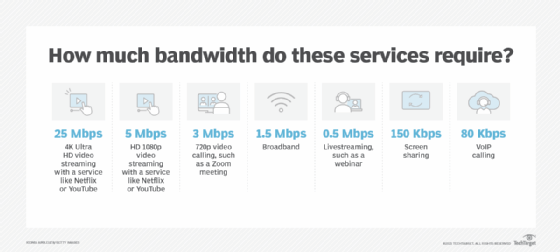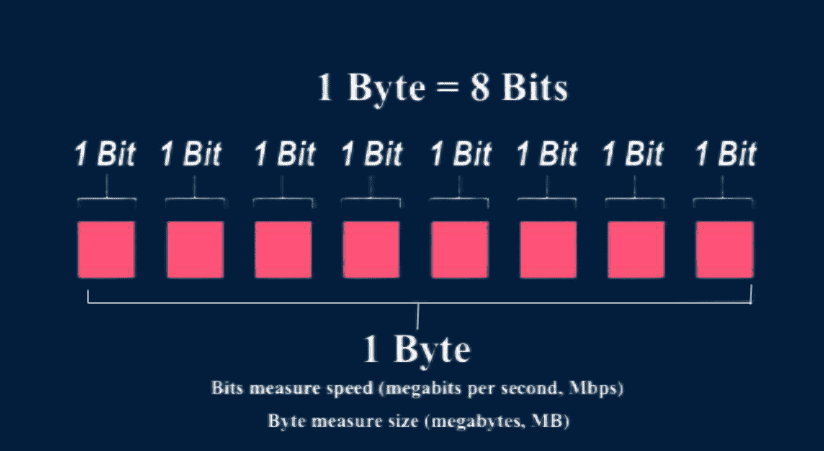The Effect of Megabits Per Second on Streaming High Quality and Efficiency
The Effect of Megabits Per Second on Streaming High Quality and Efficiency
Blog Article
How Megabits Per Second Impact Your Online Tasks
The principle of megabits per second (Mbps) plays a pivotal role in shaping our online experiences. As electronic tasks multiply, recognizing the effects of Mbps on streaming, pc gaming, and video clip conferencing ends up being significantly crucial. Higher Mbps can enhance performance and reduce disturbances, while poor rates might promote frustration and inefficiency. Assessing your house's specific needs in regard to these rates is necessary, especially as multiple tools strive for data transfer. Yet, the subtleties of just how Mbps influences various online tasks require more expedition, particularly as our reliance on electronic connectivity remains to develop.
Understanding Megabits Per Second
When thinking about internet speed, it's necessary to comprehend the principle of megabits per second (Mbps), which serves as a common measurement for data transfer prices. This metric measures just how much data can be sent over an internet link in one second, providing a clear understanding of performance capacities - Megabits Per Second. For context, one megabit amounts to one million little bits, and Mbps is commonly utilized to share bandwidth for different on-line activities
A higher Mbps shows a faster internet link, making it possible for users to carry out tasks such as downloading and install files, searching internet sites, and participating in online gaming a lot more successfully. As an example, normal surfing calls for around 1-5 Mbps, while streaming high-def video clip might require 5-25 Mbps. Recognizing these requirements is critical for figuring out the ideal net speed needed for specific activities.
Additionally, the variety of devices attached to a network can affect general performance. Several individuals streaming, pc gaming, or downloading concurrently can stress offered data transfer, resulting in slower speeds - Megabits Per Second. Evaluating personal online habits and needs is essential in picking a web strategy that lines up with one's requirements, guaranteeing a seamless electronic experience
Streaming and Buffering Issues
Streaming high-def material has actually come to be a staple of modern online entertainment, yet it is frequently come with by discouraging buffering problems. These disturbances can dramatically interfere with the seeing experience, leading to frustration and prospective loss of audience involvement. Buffering takes place when the data sent from the streaming solution is not gotten promptly sufficient to maintain a smooth playback, typically due to not enough web rate determined in megabits per second (Mbps)

Moreover, real-time streaming can be influenced by network blockage, which occurs when multiple tools share the exact same data transfer. Optimizing connection rate and making sure appropriate Mbps is vital for a seamless streaming experience. As streaming solutions remain to progress, comprehending the impact of Mbps on buffering concerns stays vital for consumers looking for uninterrupted entertainment.
Online Pc Gaming Performance
The influence of web rate on online tasks extends past streaming, substantially influencing on the internet gaming performance. In affordable video gaming, reduced latency and high transmission capacity are crucial for a smooth experience. A quick connection lessens lag, allowing gamers to respond quickly to in-game occasions, which can be the official website distinction between victory and loss.
Transmission capacity, measured in megabits per second (Mbps), plays an essential role in sustaining numerous devices and video gaming platforms all at once. Not enough bandwidth can result in went down links or reduced game high quality, adversely influencing gameplay. On the internet multiplayer video games call for significant data transfer, particularly during peak video gaming hours when many gamers are online.
Busy first-person shooters require higher speeds to preserve responsiveness, while turn-based strategy video games may function fairly well on lower speeds. As on the internet video gaming proceeds to advance, with enhancing graphical fidelity and more intricate multiplayer atmospheres, the demand for higher Mbps will just magnify.
Video Conferencing High Quality
In today's digital landscape, video conferencing high quality is heavily influenced by web speed, specifically in terms of transmission capacity and latency. Top notch video clip calls require sufficient bandwidth to send sound and video clip information effortlessly. Generally, a minimum of 1.5 Mbps upload and download speeds is advised for standard meaning video, while high-def video conferencing usually requires a minimum of 3 Mbps.
Latency, or the delay between sending out and receiving information, likewise plays a crucial function in the customer experience. Greater latency can lead to echo, lag, and disjointed communications, which can hinder partnership and involvement throughout conferences.
Furthermore, several participants in a video meeting can stress available data transfer, necessitating also higher rates. Network blockage, typically brought on by synchronised tasks like streaming or downloading, can additionally weaken video high quality. Therefore, for organizations relying upon video conferencing for remote collaboration, comprehending the connection between megabits per general and second communication top quality is necessary for maintaining performance and boosting virtual interactions.
Selecting the Right Web Plan
Picking an ideal net strategy is vital for making certain optimum efficiency in different on the internet activities, especially in setups that require high data transfer, such as video conferencing and online gaming. Megabits Per Second. When thinking about a web plan, it is important to assess both the rate and information allowance to match your specific use needs
For households with numerous individuals engaging in simultaneous tasks, a plan offering higher megabits per second (Mbps) is suggested. Usually, a minimum of 25 Mbps is appropriate for standard streaming and surfing, while plans exceeding 100 Mbps are better for even more extensive jobs. Additionally, take into consideration the nature of your online tasks; video conferencing calls for at least 1.5 Mbps publish speed, while online video gaming may Homepage require a reduced latency yet constant link.
Unrestricted information strategies can stop throttling and disturbances, especially if heavy use is expected. By thoughtfully selecting a web strategy customized to your requirements, you can enhance your on the internet experience, ensuring smooth, continuous accessibility to your recommended activities.
Final Thought
In final thought, the value of megabits per second (Mbps) in forming online tasks can not be overemphasized. Greater Mbps assists in smooth streaming, minimizes buffering, improves gaming experiences, and guarantees top notch video clip conferencing. On the other hand, insufficient data transfer can result in aggravating interruptions and reduced efficiency across various tasks. A detailed understanding of private or home Mbps needs is necessary for choosing a suitable net plan that appropriately sustains diverse online tasks and user needs.

Usually, a minimum of 25 Mbps is appropriate for conventional streaming and browsing, while strategies surpassing 100 Mbps are more suitable for more extensive tasks. Additionally, think about the nature of your online activities; video clip conferencing calls for at least 1.5 Mbps submit rate, while on-line video gaming may require a lower latency but regular link.
Report this page